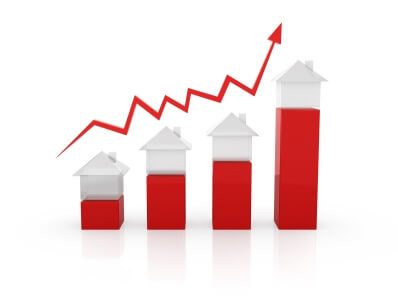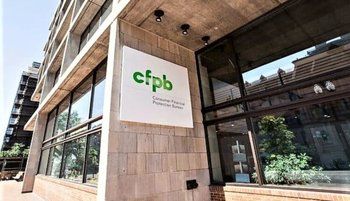Basement level mortgage rates are always a welcome sign for homebuyers and refinancers. As rates bounce off the bottom, it's never too soon to think about what you can do to combat rising rates. If you're at the mercy of rising rates, you still have options to keep your rates and monthly payments low. Here are 10 things you need to know when mortgage rates are rising (or have risen); you might be able to help yourself to some savings.

First things first: don't panic. Mortgage rates are notoriously fickle, following the whims of the bond market. While it's true that interest rates rise much more quickly than they fall, even a sharp jump in one day or week can be erased over the next week or two. The current 30-year fixed rate mortgage has climbed off rock-bottom levels but still ranks among the lowest we've seen in quite some time. Plus, keep in mind that even a one-half percent rise (i.e. from 3 percent to 3.5 percent) is only about a $55 per month increase for a $200,000 loan -- and since most of your early payments are tax-deductible interest, you may be able recoup some of that on April 15.
Pay points to lower the rate
You can pay additional discount points to lower your interest rate. Each point will cost you 1 percent of the loan amount, so it's not a cheap option -- but each point you pay should lower your interest rate between one-eighth percent and one-quarter percent, depending upon the product you choose. For example: you may be able to pay one point ($1,000 on a $100K loan) to lower a 3.5 percent rate to 3.25 percent one. On $200,000, you'll reduce your payment by about $27 per month, so you'll break even in a little over six years.
You'll probably need some spare cash (say, in a rainy-day fund) to do this -- but if you're refinancing, the lender may let you instead add the cost to the amount you're borrowing, known as a low-cash-out refinance.
Consider another loan product
While the variety of products in the market has become more limited lately, there are still an array of products, from a long-term fixed rate mortgage (FRM) to a short term ARM. If a 3.25 percent 30-year FRM might be too much for your budget, a 5/1 "Hybrid" ARM could fit the bill. These have a fixed interest rate for the first five years at a half-percent or more below the 30-year fixed. That way, you get in at a rate you can afford -- but after that, your rate (and payments) will change annually, so keep an eye on mortgage rates and watch for chances to refinance into a real FRM. Or, possibly, into another hybrid ARM; they're also available in 3/1, 7/1, and 10/1 flavors. The longer the fixed-rate period, however, the lesser the interest rate savings.
Take a shorter commitment period
One of the lesser-known facets of mortgage pricing (rates) is that lenders offer a wide variety of commitment periods, ranging from 30 days to 90 days, and sometimes even longer. The commitment period is simply the time expected to close the loan, and mortgage lenders often quote an "average" one, like 45 days. If your paperwork is in order, and if your credit record is good, you might be able to close your loan in only 30 days. As a reward, your rate will be slightly lower as a result of the shorter commitment period. This may be worth asking about as lenders get less busy, since closing times may be starting to get shorter again.
Offset the rise in rates with a bigger down payment
You can still keep your monthly costs down if you can afford more upfront. A $200,000 mortgage at 3 percent has a monthly payment of $843.21; with a 3.5 percent rate and the same qualifying income, you'll only be able to borrow $187,799, which means you'll need to come up with an additional $12,001 to keep your payment level. If you're cashing stocks to generate your down payment anyway, you might consider this option. A larger down payment can also help lower or even eliminate the need for Private Mortgage Insurance, and that can help make qualifying easier, too.
Get a "floatdown" option
Think mortgage rates might be lower by the time you close, but are too afraid to let your rate really "float"? A floatdown option may be the best of both worlds. You can pay a small fee (one-quarter to one-half of a point is common) to have access to lower mortgage rates if they fall during your commitment period. Another method sets limits of how high or low your rate can travel during the commitment period, but you may start at a rate that is higher than market to start with (i.e. 3.75 percent with a floatdown option to 3.25 percent versus 3.5 percent with no floatdown option).
Pay down your ARM
If you have an adjustable rate mortgage (ARM) which will be subject to higher interest rates in the months (or years) ahead, you can offset at least some of the effect of higher interest rates by having them apply against a smaller loan balance. For example, a $100,000 5/1 Hybrid ARM at 3 percent will have a remaining balance of $88,707 at the 61st month. If the rate should rise to 5 percent, your payment would jump from $474 to $519. However, if you had paid down the loan by an additional $50 per month for the first five years, your balance at the time of adjustment would be $85,467 -- and your monthly payment would only rise to $500. Send an extra $100 per month during that time and your payment lifts only to $481. (Note: To keep your payment the same at 5 percent as it was at 3 percent, you would need to have paid the loan balance down to $72,119 -- about a $256-per-month prepayment pace). Of course, every additional dollar in principal you send today is one where no interest will be charged tomorrow, so don't wait.
If you did wait, you can still play "catch-up", though... a one-time prepayment of about $16,000 right before the interest rate is due to reset at the 61st month will give you the same effect, and your monthly mortgage payment will remain level despite the increase in interest rate (the lower balance helps for future adjustments, too).
Lengthen the term of your loan
If an ARM -- even a Hybrid ARM with a fixed interest rate for a few years -- makes you uncomfortable, you might consider a longer term for your mortgage. A fixed rate mortgage with a 40-year term will have a payment about $25 per month lower than would a 30-year term. While you get some relief, there are drawbacks of which you should be aware. Before you "go long" you should read The Return of the 40-year Mortgage. Mortgages with 40-year terms aren't "qualified mortgages" and so are rare in the marketplace these days, but you might be able to locate one through a mortgage broker.
What about a "2-1" buydown?
Buydowns are among the oldest loan gimmicks around. You start with an interest rate that is about two percentage points below the market rate for the first year. After that, the rate steps up by 1 percent in the second year, then rises again by 1 percent a final time for the next 27 years. The catch: The final interest rate usually ends up about one-half percent above today's mortgage rates. So, rather than getting 3.5 percent today, you might get 2 percent in the first year, 3 percent in year two, and then 4 percent for the remainder of the loan. Of course, you could refi before that happens if rates should break in your favor. Like 40-year terms, these are rather rare these days, but as rates rise and mortgage business begins to slow they will probably reappear at some point.
Try a "Second Mortgage" instead
In some circumstances, you might find a local bank, thrift or credit union offering Home Equity Loans at very attractive rates, which you may be able to use to replace your first mortgage. Lenders usually write these loans for their own portfolios, meaning that there are wide ranges of rates in most markets, so you'll need to shop around. Of course, most home equity loans aren't made with terms of 30 years, but are usually available in 10 and 15-year varieties, so if you started with a 15-year loan, or if you're deep into your mortgage -- more than 10 years in -- you can possibly replace your existing loan at a lower rate or even shorten the term a little with no real rise in monthly payment. Be wary of using a home equity line, though, especially if you think you'll be in this mortgage for a long time. As these are variable rate products, usually tied to the Prime Rate, the prospect of higher interest rates in the years ahead makes this a viable option for "holding periods" of three years or less.
Consider an "Interest-only" payment plan
While these can and do have their risks, they are among the few choices where borrowers have a degree of control over their monthly payment. If a "high" fixed rate mortgage or even a fully-amortizing Hybrid ARM brings too great of a budgetary restraint, you might select a mortgage with this payment method to help meet your goals. However, in order to ameliorate future risks of sharply higher monthly payments, you should pay as much of the actual principal and interest due as you possibly can. This way, your loan will have a lower dollar amount exposed to higher rates or payment requirements down the road. Note: As these aren't "qualified mortgages" (QM) you'll need to seek out a lender who will write these loans for their own portfolio. If you can't find a local response in your market, a mortgage broker might be able to help you locate a lender.
A bonus tip: Shop harder for your mortgage rate
If sustained, rising interest rates ultimately reach all lenders, but not all lenders react in the same way or with the same speed, or to the same degree to either rising or falling rates. Some may pass along the slightest change in rates, others may catch up to the market more slowly. When HSH surveyed the markets for rates, we routinely found differences of as much as a one-third of a percentage point between the lowest and highest quotes for 30-year fixed-rate mortgages in a single day, and even greater differences in prices for common ARMs. That's still true today; you can see this in a recent study by Freddie Mac, where mortgage-shoppers who contacted at least five mortgage lenders improved their mortgage rate by an average of about 17 basis points and some as much as a quarter percent. So the old advice is still true -- shop around for the best mortgage rates.
Related: Some good (and bad) things about rising mortgage rates
Best of Luck!



